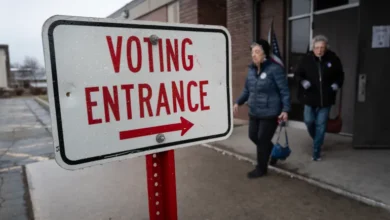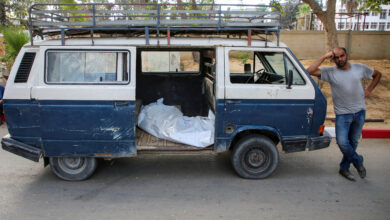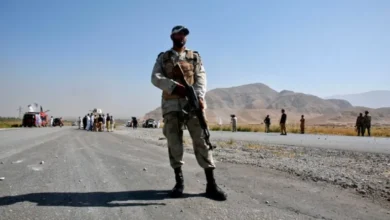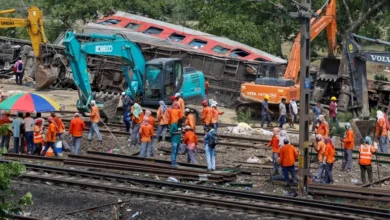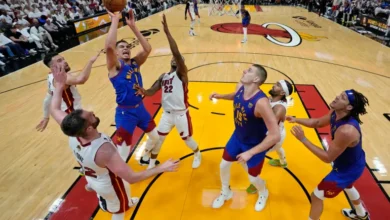Los Angeles unrest: Is Trump allowed to deploy National Guard troops?
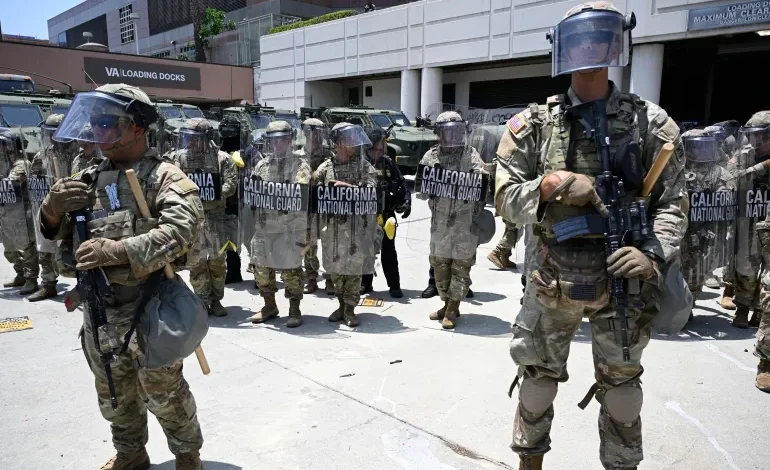
United States President Donald Trump has ordered the deployment of 2,000 members of the National Guard to Los Angeles County to quell protests against coordinated immigration raids, bypassing the authority of the governor of California.
The extraordinary development came on Saturday, the second day of protests, amid clashes between law enforcement officers and demonstrators in the city.How did it start?
It all started on Friday, when law enforcement officials in full riot gear descended on Los Angeles, rounding up day labourers at a building supply shop.
The raids, part of a military-style operation, signalled a step up in the Trump administration’s use of force in its crackdown against undocumented immigrants. The arrests were carried out without judicial warrants, according to multiple legal observers and the American Civil Liberties Union.
The Department of Homeland Security said more than 100 undocumented immigrants have been arrested in two days of raids across southern California.
After word spread through southern Los Angeles of immigration agents arresting people, residents came out to show their outrage, and a police crackdown followed.What is the National Guard?
It is made up of part-time soldiers who can be used at the state and federal levels. Under the authority of state governors, National Guard troops can be deployed to respond to emergencies, such as the COVID pandemic, hurricanes and other natural disasters. It can also be used to tackle social unrest when local police are overwhelmed.During times of war or national emergencies, the federal government can order a deployment for military service – that is, when the National Guard is federalised and serves under the control of the president.
Can the president deploy the National Guard in a state?
The president can federalise, or take control of, the National Guard in very specific cases.The main legal mechanism that a president can use to send military forces is the Insurrection Act to suppress insurrections, rebellions, and civil disorder within the country. If certain conditions are met, the president can send in the National Guard, bypassing the authority of the governor, though that is rare and politically sensitive.
Following the breakout of protests in Los Angeles, Trump did not invoke the Insurrection Act, but rather a specific provision of the US Code on Armed Services. It says National Guard troops can be placed under federal command when “there is a rebellion or danger of a rebellion against the authority” of the US.
But the law also says “orders for these purposes shall be issued through the governors” of the states, making it not clear whether Trump had the legal authority to bypass Newsom.
Trump’s directive ordering the deployment of troops said “protests or acts of violence” directly inhibiting the execution of the laws would “constitute a form of rebellion” against the government.
According to Robert Patillo, a civil and human rights lawyer, Trump’s order will likely face legal challenges.
“Normally, federal troops are going to be used inside states at the invitation of the governor of that state,” he told Al Jazeera, citing the 1992 riots in Los Angeles, which were put down by federal troops invited by Pete Wilson, then-governor of California.
“But if the governor, such as Gavin Newsom, has not asked for federal troops to come in, and these troops are coming in against his will, then there will be challenges … and this will have to go to the Supreme Court in order to determine who has a legal right to deploy those troops,” Patillo said.



